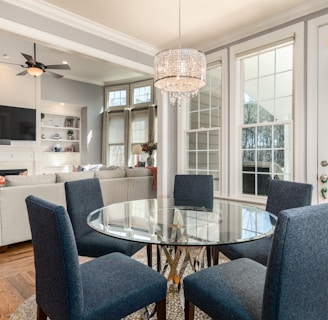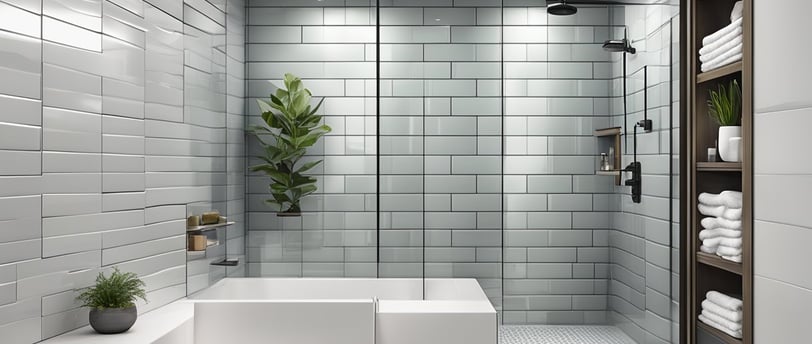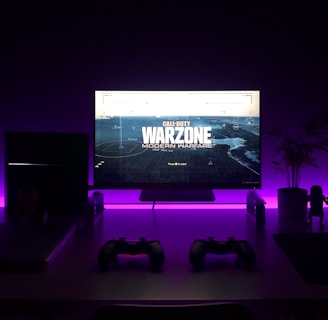What are the Latest Home Decorating Trends for 2025?
What are the Latest Home Decorating Trends for 2025? In 2025, earthy tones dominate, especially shades like terracotta, sage green, and muted ochre. These colors create warm, inviting spaces.
HOME COMFORT


The latest home decorating trends focus on creating comfortable, functional spaces with natural materials and muted color palettes. Minimalism remains popular, but with softer, more inviting textures replacing stark lines.
Sustainable and eco-friendly designs, along with smart home technology integration, are key elements shaping current decor preferences. Personalized touches and versatile furniture continue to gain traction as people seek both style and practicality in their living areas.


Top Home Decorating Trends in 2025
Interior design is focusing on colors that evoke calm and connection to nature. Choices also highlight sustainability and tactile engagement, with designers embracing both environmental responsibility and sensory richness.
Color Palettes Shaping Interiors
In 2025, earthy tones dominate, especially shades like terracotta, sage green, and muted ochre. These colors create warm, inviting spaces.
Soft neutrals remain popular but are paired more often with deep blues or charcoal greys to add contrast. Interior walls and furnishings reflect these palettes, encouraging balance between warmth and calm.
Accent colors include burnt orange and soft pink, providing subtle pops without overwhelming. Matte finishes are preferred to enhance the natural, understated look.
Sustainable and Eco-Friendly Designs
Sustainability is no longer optional but essential. Home decoration uses materials like reclaimed wood, bamboo, and recycled metals regularly.
Furniture is often crafted to be durable and repairable, extending its lifecycle. Natural fabrics such as organic cotton and linen replace synthetic textiles.
Energy-efficient lighting and low-VOC paints support eco-conscious choices. Biophilic design integrates plants and natural elements to improve indoor air quality and wellbeing.


Bold Patterns and Textures
Bold, geometric patterns are making a strong statement in upholstery and wallpaper. These patterns add visual interest without clashing due to a restrained color scheme.
Textures focus on layering: velvet cushions, woven rugs, and tactile wall panels create depth and comfort. Mixes of smooth and rough surfaces provide contrast.
Patterns range from abstract shapes to reinterpretations of mid-century modern motifs. They are used sparingly to enhance specific areas rather than cover entire rooms.
Emerging Materials and Finishes
Materials with authentic texture and durability are increasingly popular, along with finishes that blend modern elegance and practical design. These choices offer both aesthetic appeal and functional benefits suitable for various spaces.
Natural Stone and Wood Accents
Natural stone is favored for its variety and resilience. Marble and travertine remain classic, appreciated for their veining and color diversity. Slate and quartzite are gaining traction for flooring and countertops due to their toughness and matte finishes.
Wood accents, particularly reclaimed and sustainably sourced varieties, contribute warmth and character. Finishes often highlight the grain through oil or matte varnishes rather than high gloss. Live-edge tables and exposed beams showcase natural irregularities, making each piece unique.
Both materials pair well with neutral palettes and earth tones. They suit kitchens, bathrooms, and living areas where durability and style intersect.


Metallic and Glass Details
Brushed and matte metallic finishes dominate over shiny surfaces. Brass and blackened steel are common in fixtures, cabinet handles, and lighting. These metals add subtle contrast while maintaining a refined, contemporary look.
Glass elements emphasize clarity and reflectivity but avoid ornate patterns. Clear, frosted, and smoked glass appear in shelving, partitions, and cabinet doors. These options increase light diffusion and visual openness without compromising privacy.
Combining metals and glass provides balance between strength and lightness. This mix supports minimalist and industrial design trends effectively.
Smart Technology Integration
Smart technology in home design now enhances convenience, security, and ambiance. Advances focus on intuitive control and seamless connectivity throughout living spaces.
Innovative Lighting Solutions
Smart lighting systems offer adaptive brightness and color temperature changes based on time of day or activity. Popular options include voice-activated bulbs and app-controlled fixtures that sync with other devices.
Energy-efficient LEDs with scheduling features reduce electricity use while providing personalized ambiance. Motion sensors can automatically turn lights on or off, improving both comfort and security.
Users often combine smart lighting with home assistants like Alexa or Google Home to create scenes, such as "movie night" or "morning routine." These setups promote easier lifestyle management through automation.


Connected Home Accessories
Connected accessories such as smart thermostats, doorbells, and security cameras integrate via a central hub or smartphone. These devices provide real-time monitoring and remote control capabilities, improving home safety and energy management.
Smart locks allow keyless entry and visitor tracking, while sensors alert homeowners to unusual activity or environmental changes like leaks. Integration with voice assistants streamlines usage and status updates.
The trend is toward systems that communicate with each other, creating unified ecosystems rather than isolated gadgets. This is essential for both functionality and user-friendly operation.
Personalized Spaces and Decor
Creating a home that reflects individual tastes and adapts to changing needs is central to current design choices. Personal touches and practical solutions combine to enhance comfort and style.
Multi-Functional Furniture
Multi-functional furniture maximizes space and utility without sacrificing design. Pieces like ottomans with storage, fold-out desks, and sofa beds address the need for flexibility in smaller living areas.
Buyers often look for modular units that can be rearranged to serve different functions, supporting both work and relaxation.
Materials like wood, metal, and upholstery dominate, with a preference for neutral tones to fit varied decors. Durability and ease of cleaning are key priorities in furniture selection.
Artisanal and Handmade Elements
Handcrafted decor adds uniqueness and supports local artisans. Items such as handwoven textiles, ceramics, and carved wood pieces are popular.
These elements provide texture and character, differentiating spaces from mass-produced interiors. Consumers value the story and craftsmanship behind artisanal goods.
Typical uses include accent walls, cushions, and decorative bowls. Combining traditional techniques with modern design ensures these pieces fit contemporary homes while preserving cultural heritage.
